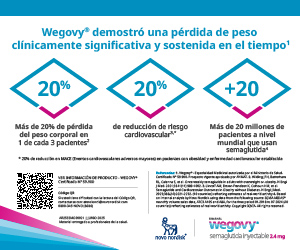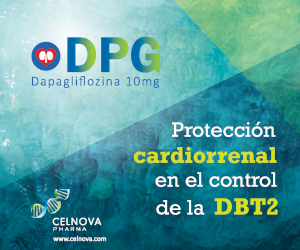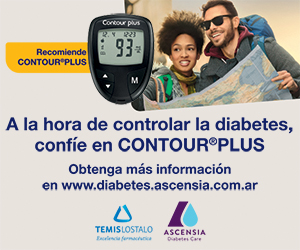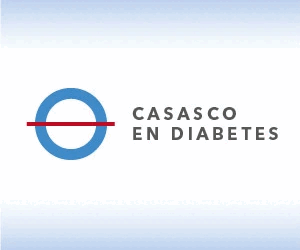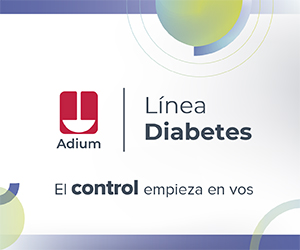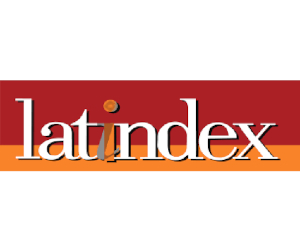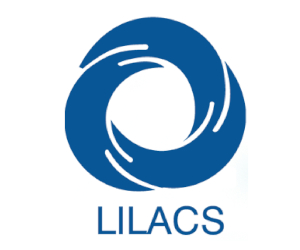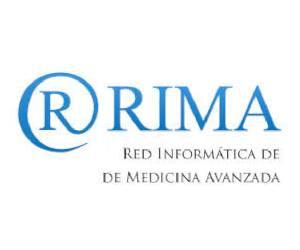Diabetes, dysglycemia and obesity: their relationship with mortality and demand for health resources during the COVID-19 pandemic (2020-2021) in a community hospital
DOI:
https://doi.org/10.47196/diab.v59i2.1192Keywords:
COVID-19, diabetes, dysglycemia, obesityAbstract
Introduction: the COVID-19 pandemic led to an increase in global morbidity and mortality that affected the community served at our Hospital, particularly vulnerable individuals with underlying comorbidities.
Objectives: to analyze whether patients with known diabetes mellitus (DM) and dysglycemia at the time of hospital admission and/or during their stay, and those with obesity, had higher mortality compared to patients without these conditions during hospitalizations due to COVID-19 infection (2020-2021). Likewise, to evaluate whether these same patients required increased demand for intensive care unit (ICU) admission and/or mechanical ventilation (MVA).
Materials and methods: a retrospective study was made of 594 patients admitted with a confirmed diagnosis of SARS-CoV-2 virus infection (SARS-CoV-2 TCR antigen immunochromatographic test and/or polymerase chain reaction, PCR) to the Hospital del Carmen de Chacabuco from May 20, 2020, to August 15, 2021. Patients were classified as: a) patients with DM: with a known diagnosis of DM with two previous fasting blood glucose levels >126 mg/dl, HbA1c >6.5%, and/or receiving oral hypoglycemic agents and/or insulin upon admission; b) dysglycemic patients: patients with previously unknown DM who were admitted and/or maintained fasting plasma glucose levels >100 mg/dl and/or postprandial blood glucose levels >180 mg/dl during their hospitalization, requiring insulin for control; (c) normoglycemic patients: those with normal blood glucose levels during their hospitalization; (d) obese patients: those admitted with a body mass index [BMI] >30; (e) normo and/or overweight patients: those with a BMI <30. Mortality rates were compared between groups. Statistical methods: Student t test, chi-square, correlation (Pearson and Spearman), Cox regression.
Results: a total of 594 patients hospitalized with COVID-19 were studied. Age X̄ 61.9 (SD 16.9 years), 56% male, and 44% female. One hundred twenty-seven (127, 21%) were patients with known DM, 309 (52%) had dysglycemia, and 205 were obese (34%). Twenty-nine of 127 patients with known DM (22.8%) died versus 67 of 309 patients with dysglycemia (21.7%), whereas in the group of patients without previous DM and with normal blood glucose during hospitalization, 18 of 158 individuals died (11.4%; p=0.01). Comparing patients with known DM and without DM (considering overall dysglycemic and/or normoglycemic) no significant difference in mortality was observed (22/127 diabetics: 22.8% versus 85/467: 18.5% non-diabetics; p=0.29). Among non-diabetics, 67/309 patients with dysglycemia died (21.7%) versus 18/158 with normoglycemia (11.4%; p=0.009). Of the obese patients, 48/205 (23.4%) versus 22/389 (5.7%) of those with normal weight/overweight required ICU admission (p=0.0001). Adjusting for comorbidities, multivariate analysis found that age (HR: 1.06/year, CI 1.04-1.08; p=0.001) and the presence of obesity (HR: 1.5, CI 1.5-2.0; p=0.004) were associated with higher mortality.
Conclusions: patients with dysglycemia had higher mortality rates during COVID-19 hospitalization compared to those with normoglycemia, a difference similar to that reported by patients with known DM. Obese patients required more ICU admission and needed RMA.
References
I. World Health Organization/Pan American Health Organization. Disponible en: https://www.who.int. Consultado mayo de 2022.
II. Copelli A, Giannarelli R, Aragona M, Penno G, et al; Pisa COVID 19 Study Group. Hyperglycemia at hospital admission is associated with severity of the prognosis in patients hospitalized for COVID-19: the Pisa COVID-19 Study. Diabetes Care 2020;43(10):2345-2348. doi: 10.2337/dc20-1380.
III. Ministerio de Salud de la República Argentina. Evaluación inicial del paciente con infección respiratoria aguda y decisión en el sitio de internación. Disponible en: https://www.argentina.gob.ar/salud/coronavirus/evaluacion-inicial-ira.
IV. Ssetongo P, Zhang Y, Witmer L, Chinchilli V, Ba MD. Association of COVID-19 with diabetes: a sistematic review and metaanalisis. Scientific Reports 2022;12:20191.
V. Zhang T, Mei Q, Zhang Z, Walline JH, Liu Y, Zhu H, Zhang S. Risk of newly diagnosed diabetes after COVID-19: a systematic review and metaanalisis BMC Medicine 2022;20:444. doi: 10.1186/s12916-022-02656-y.
VI. Modarelli R, Sarah S, Ramaker M, Bolobiongo M, Benjamin R, Balicioglu PM. Pediatric diabetes on the rise. Trends in incident diabetes during the COVID-19 pandemic. J Endocr Soc 2022;6:1-9. doi: 10.1210/jendso/bvac024.
VII. Kamrath C, Eckert A, Holl R, Rosenbauer J. Impact of the COVID 19 pandemic on children and adolescents with new type 1 diabetes. Pediatric Diabetes 2023;1. doi: 10.1155/2023/7660985.
VIII. Hischler V, Molinari C, Krochick G, Prieto M, et al. Debut de diabetes mellitus tipo 1 antes, durante y después de la pandemia de COVID-19. Estudio multicéntrico. Rev Soc Arg Diab 2024;58(1):14-22.
IX. Xie Y, Aly A. Risk and burden of incident diabetes in long COVID a cohort study. Lancet Diabetes Endocrinol 2022;10(5):311-321.
X. Huang I, Lim MA. Diabetes mellitus is associated a increased mortality and severity of disease in COVID-19 neumonia. A systematic review, metanálisis and metaregression Diabetes Metab Syndr 2020;(4)395-403. doi: 10.1016/j.dsx.2020.04.018.
XI. Kumar A, Arora A, Sharma P, Anikhindi SA, Bansal A, Singla V, et al. Is diabetes mellitus associated with mortality and severity of COVID 19? A metaanalysis. Diabetes metab Syndr 2020;14(4):535-545.
XII. Wu J, Zhang J, Sun X, Wang L, Xu Y , Zhang Y, Liu X, Dong CH. Influence of diabetes mellitus and severity and fatality of SARS COV-2 infection. Diabetes Obes Metab 2020;22:1907-1914.
XIII. Djuric O, Ottone M, Vicentini M, Venturelli F, Pezzarosi A, Manicardi A, Greci M, Rossi P; Reggio Emilia COVID-19 Working Group. Diabetes and COVID-19 testing, positivity and mortality. A population-wide stydy in Northern Italy. Diabetes Res Clin Pract 2022. doi: 10.1016/j.diabres.2022.110051.
XIV. Barron E, Bakhai Ch, Kar P, Weaver A, Bradley D, Ismail H, Knighton P, et al. Association of type 1 and type 2 diabetes with COVID-19 related mortality in England. A whole population study. Lancet Diabetes Endocrinol 2020:13:8(10):813-822. doi: 10.1016/S2213-8587(20)30272-2.
XV. Expert Committe on the Diagnosis and Classification of Diabetes Mellitus. Report of the expert committe on the diagnosis and classification of diabetes mellitus. Diabetes Care 2003;26(suppl 1):S5-S20.
XVI. Commendatore V, Faingold C, Fenili C, Frechtel G, González C, Llanos I, et al. Glucemia en ayunas alterada: ¿es oportuno utilizar el punto de corte en 100 mg/dl en Argentina? Rev Soc Arg Diab 2023:57(1):09-19.
XVII. Fadini GP, Morieri ML, Boscari F, Fioretto P, Maran A, et al. Newly diagnosis diabetic and admission hyperglycemia predict COVID 19 severity by aggravating respiratory deterioration. Diabetes Res Clin Pract 2020.
XVIII. Wang S, Ma P, Zhang S, Song S, et al. Fasting blood glucose at admission is an independent predictor for 28 days mortality in patients with COVID 19 without previous diagnosis of diabetes a muticenter retrospective study. Diabetologia 2020;63:2102-2111.
XIX. Carrasco-Sánchez F, López-Carmona D, Martínez-Marco F; for The SEMI-COVID-19 Network. Admission hyperglucemia as a predictor of mortality in patients hospitalized with COVID 19 regardless of diabetes status: data fron the Spanish SEMI-COVID-19 registry. Ann Med 2020;53(1):103-116. doi: 10.1080/07853890.2020.1836566.
XX. Mamtani M, Athavale A, Abraham M, Vernik J, et al. Association of hyperglycemia with hospital mortality in non diabetic patients:a cohort study. Diabetes & Metabolism 2020;47:101254. doi: 10.1016/j.diabet.2021.101254.
XXI. Iacobellis G, Penaherrera C, Bermúdez L, Bernal-Mizrachi E. Admission hyperglycemia and radiological findings in SARS-CoV-2 in patients with and without diabetes. Diabetes Res Clin Pract 2020. doi: 10.1016/j.diabres.2020.108185.
XXII. Grosembacher L, Puchulu F, Fretes O, Giunta J, González C, Umpierrez G. Guía de recomendaciones para el manejo de la hiperglucemia en pacientes hospitalizados Revista Argent Endocrinol Metab 2018:55(1)34-40.
XXIII. Umpierrez G, Scott I, Bazargan N, You X, Thaler L, Kitabchi A. Hyperglycemia and independent marker of in hospital mortality in patients with undiagnosed diabetes. J Clin Endocrinol Metab 2002;87(3):978-82. doi: 10.1210/jcem.87.3.8341.
XXIV. Dieuzeide G, Viñes E, Salazar-Sáez J, Arrieta R, Saenz R, Mayas A, Sosa A, et al. Rev Soc Arg Diab 2005;39(2):3-9.
XXV. Alzueta G, Bauchi JC, Dieuzeide G, et al. Hiperglucemia de estrés en infarto agudo de miocardio: ¿se asocia con aumento de la mortalidad? Rev Soc Arg Diab 2018;52(2):37-47. doi: 10.47196/diab.v52i2.117.
XXVI. Ben Nasr M, D´Addio F, Montefusco L, Usualli V, et al. Indirect and direct effects of SARS-CoV-2 on human pancreatic cells. Diabetes 2022;71:1579-1590.
XXVII. Kim S, Arora I, Hsia D, Knowler W, et al. New onset diabetes after COVID. J Clin Endocrinol Metab 2023;108:e1164-e1174.
XXVIII. Smati S, Tramunt B, Wargny M, Gourdy P, et al. COVID-19 and diabetes outcomes. Rationales for and updates from the coronado study. Current Diabetes Reports 2022;22:53-63. doi: 10.1007/s11892-022-01452-5.
XXIX. Smati S, Tramunt B, Wargny M, Caussy C; the CORONADO investigators. Relationship between obesity and severe COVID-19 outcomes in patients with type 2 diabetes: Results from the CORONADO study. Diabetes Obes Metab 2021:23 (2):391-403 doi: 10.1111/dom.14228.
XXX. Drucker D. Diabetes, obesity, metabolism and SARS 2 COVID infection: the end of the beginning. Cell Metabol 2021;33:479-498.
XXXI. Hutten Ch, Padalia K, Vasbinder A, Huang Y, et al. Obesity, inflamation and clinical outcomes in COVID-19 a multicenter prospective study. J Clin Endocrin Metab 2024;109:2745-2753. doi: 10.1210/clinem/dgae273.
Downloads
Published
Issue
Section
License
Copyright (c) 2025 on behalf of the authors. Reproduction rights: Argentine Society of Diabetes

This work is licensed under a Creative Commons Attribution-NonCommercial-NoDerivatives 4.0 International License.
Dirección Nacional de Derecho de Autor, Exp. N° 5.333.129. Instituto Nacional de la Propiedad Industrial, Marca «Revista de la Sociedad Argentina de Diabetes - Asociación Civil» N° de concesión 2.605.405 y N° de disposición 1.404/13.
La Revista de la SAD está licenciada bajo Licencia Creative Commons Atribución – No Comercial – Sin Obra Derivada 4.0 Internacional.
Por otra parte, la Revista SAD permite que los autores mantengan los derechos de autor sin restricciones.





